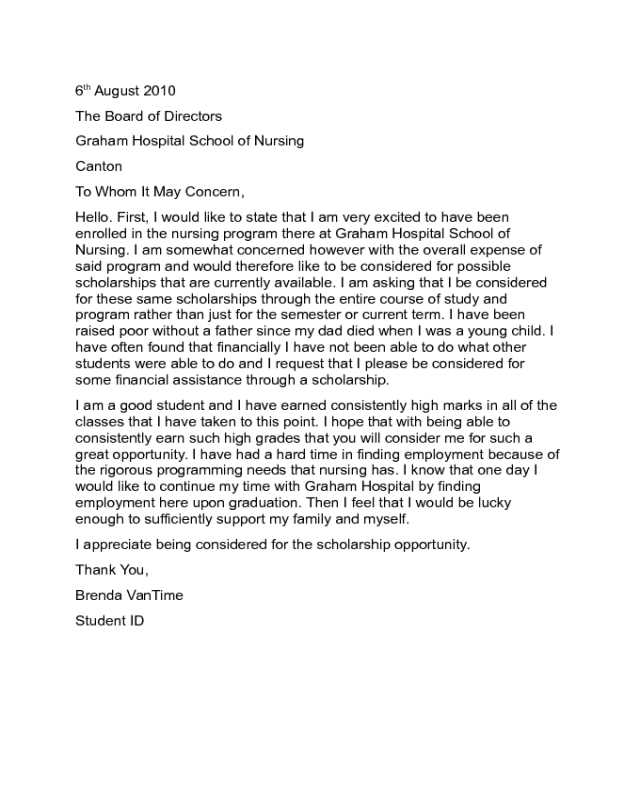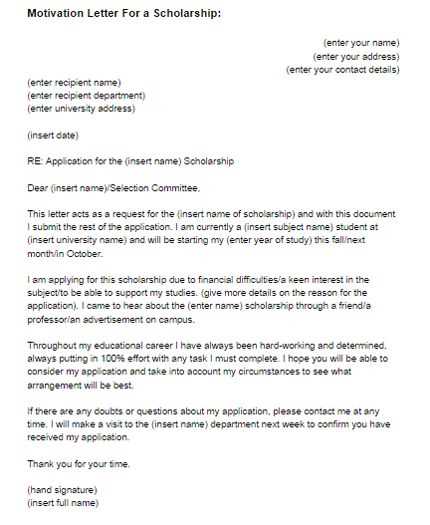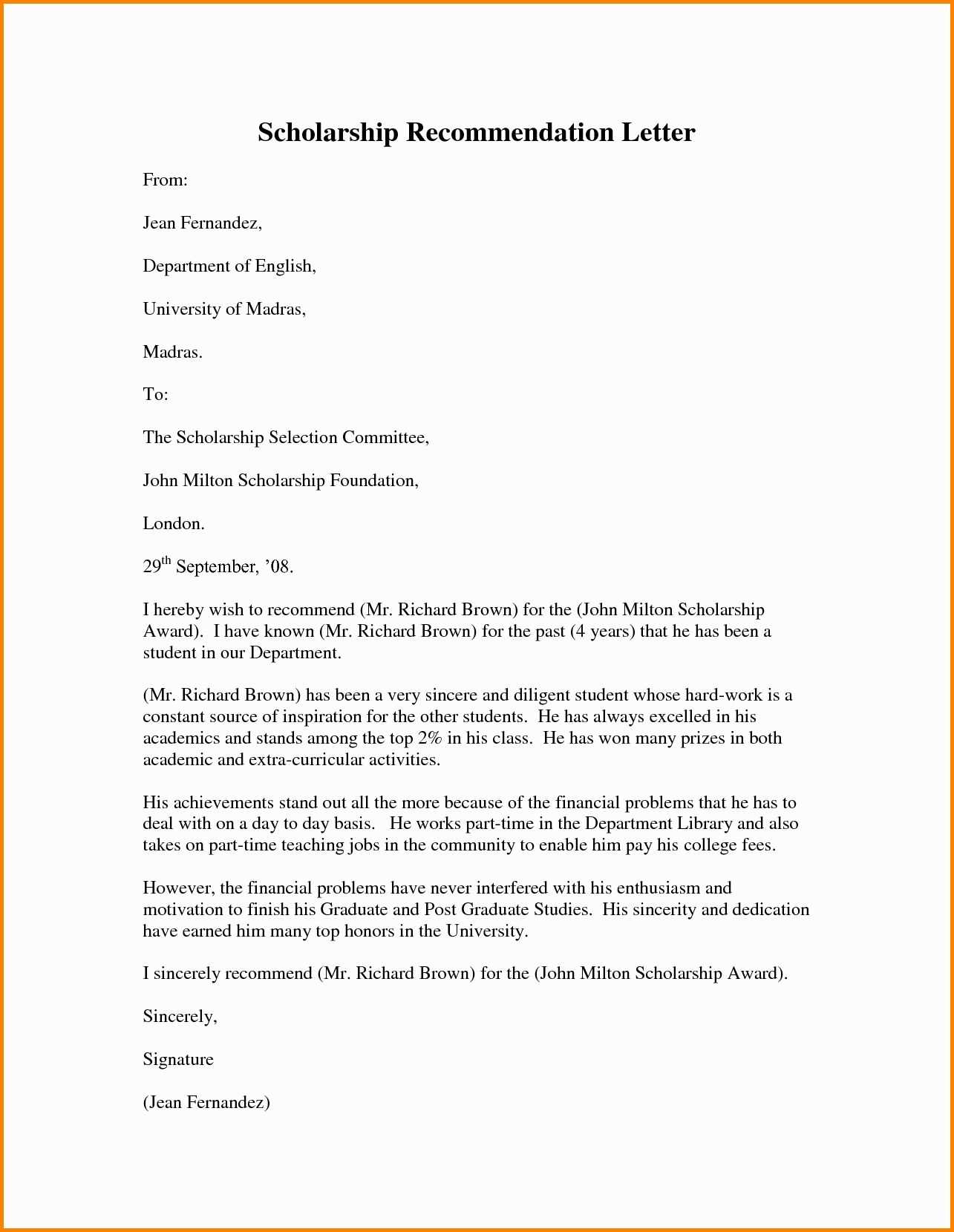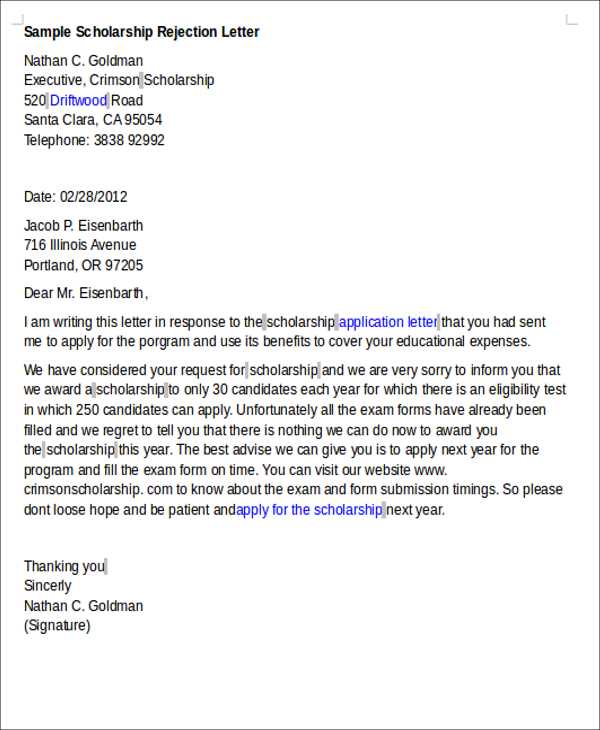Scholarship denial letter template

Write your scholarship denial letter with clarity and respect. When informing an applicant that they did not receive the scholarship, aim for a tone that is courteous yet straightforward. Begin by acknowledging their effort in applying and expressing gratitude for their interest in your program.
Use a direct approach to communicate the outcome, providing a clear and concise explanation. Be sure to avoid giving false hope. If you are unable to provide specific feedback about the decision, it is helpful to mention that the selection process was highly competitive. Close the letter by encouraging the applicant to apply again in the future, or offer alternative resources for funding opportunities.
Template Example:
Dear [Applicant’s Name],
Thank you for applying for the [Scholarship Name]. After careful consideration, we regret to inform you that we are unable to offer you the scholarship at this time. The selection process was extremely competitive, and while your qualifications were impressive, we could not extend an award to every deserving applicant.
We encourage you to apply for future opportunities, and we recommend you explore additional funding options through [provide suggestions or resources]. We appreciate your interest in our program and wish you success in your academic pursuits.
Best regards,
[Your Name]
[Your Title]
[Institution Name]
Here is the revised version:
Begin with a clear and concise opening. Address the applicant respectfully but firmly. Acknowledge the effort they put into applying, and express gratitude for their interest in the scholarship. Avoid generic statements, focusing instead on their application specifics.
Next, explain the reason for the denial in a straightforward yet considerate manner. Use neutral, factual language, making sure not to sound dismissive or overly formal. For example, “After careful review, we have selected candidates whose qualifications more closely align with our current needs.”
Follow up with a message of encouragement. Let the applicant know that while they were not selected, you encourage them to apply for future opportunities. You can also suggest ways they might strengthen their application, such as gaining more experience or refining their skills.
End on a positive note. Thank them again for their application, and express best wishes for their future endeavors. This approach leaves a door open for future interactions and maintains a positive relationship.
- Scholarship Denial Letter Template
Crafting a scholarship denial letter requires a balance of professionalism, empathy, and clarity. Below is a structured template to help guide you in delivering the message in a respectful and thoughtful manner.
Scholarship Denial Letter Template
Dear [Applicant’s Name],
Thank you for your application for the [Scholarship Name]. We appreciate the time and effort you invested in your submission. After careful review, we regret to inform you that we are unable to offer you the scholarship at this time.
We received many strong applications this year, and the selection process was highly competitive. While we were impressed with your qualifications and achievements, we could only award a limited number of scholarships. Unfortunately, we were unable to include you among the recipients.
We encourage you to apply again in the future or explore other opportunities that may align with your goals. You are a talented individual, and we believe your future endeavors will be successful.
We wish you the best in your academic and professional pursuits. If you would like feedback on your application, feel free to contact us at [Contact Information].
Thank you again for your interest in [Scholarship Name].
Sincerely,
[Your Name]
[Your Title]
[Organization Name]
[Contact Information]
How to Structure a Scholarship Denial Letter Professionally
Begin the letter with a formal greeting. Address the applicant by their full name, and use a polite tone throughout. Acknowledge the applicant’s efforts in applying for the scholarship to show respect for their time and commitment.
1. Opening Statement
Start with a clear and concise statement that informs the applicant of the decision. For example, “We regret to inform you that we are unable to offer you the scholarship at this time.” Avoid using ambiguous language to prevent confusion.
2. Acknowledgement of the Applicant’s Efforts
Show appreciation for the applicant’s hard work in their application. Highlight specific achievements or qualities that were noted in their submission. This can help soften the impact of the denial and leave a positive impression. For instance, “We were impressed by your academic achievements and dedication to community service.”
3. Explanation of the Decision
Briefly explain the reason for the denial. Keep this section professional and avoid any unnecessary details that could be misinterpreted. If applicable, mention that the selection process was highly competitive. Be transparent, but always maintain a respectful tone.
4. Closing Statement
End the letter on a positive note by encouraging the applicant to apply for future opportunities. Offer best wishes for their academic and professional journey, and express gratitude for their interest in the scholarship. “We wish you the best in your future academic endeavors.”
5. Signature
Include a polite sign-off such as “Sincerely” or “Best regards,” followed by your full name and position. This reinforces the professionalism of the letter.
| Section | Recommendation |
|---|---|
| Opening Statement | Clearly inform the applicant of the decision with polite language. |
| Acknowledgement | Recognize the applicant’s strengths and efforts to maintain a positive tone. |
| Explanation | Provide a brief, professional reason for the denial without being overly detailed. |
| Closing | Encourage future applications and wish the applicant success. |
| Signature | Conclude the letter with a polite sign-off and your professional details. |
Key Elements to Include in Your Denial Letter
Be clear and direct with your message. Start by clearly stating that the scholarship application was not successful. Avoid vague language and provide a straightforward explanation.
1. Personalized Salutation
Address the recipient by name if possible. This creates a more personal touch and shows respect for the individual’s effort in applying.
2. Reason for Denial
Briefly explain the reason for the denial without going into excessive detail. It’s helpful to mention if the decision was based on funding limitations, highly competitive applicant pool, or specific eligibility criteria not being met. Providing a reason ensures transparency and fairness.
3. Acknowledgment of Effort

Recognize the effort that went into the application. A simple statement like “We appreciate the time and effort you put into your application” can leave the recipient with a sense of gratitude and respect, despite the disappointing news.
4. Encouragement for Future Opportunities
Offer encouragement for the future. Invite the applicant to apply again next year or suggest other scholarships that may be a better fit. This can help soften the impact of the denial while providing hope for the future.
5. Closing Remarks

End with a respectful closing. A simple “Thank you for your interest” or “We wish you success in your future endeavors” maintains professionalism and goodwill.
| Element | Purpose |
|---|---|
| Personalized Salutation | Shows respect and creates a personal connection. |
| Reason for Denial | Provides clarity on the decision without being too detailed. |
| Acknowledgment of Effort | Recognizes the applicant’s hard work and dedication. |
| Encouragement for Future Opportunities | Softens the blow and gives hope for future success. |
| Closing Remarks | Ends the letter on a positive, respectful note. |
Begin with a clear, direct statement. Let the recipient know the decision without any ambiguity, but avoid sounding harsh or cold. For example: “We regret to inform you that we are unable to offer you the scholarship at this time.”
Next, acknowledge the effort the applicant put into their application. A simple sentence like, “We appreciate the time and effort you dedicated to your application,” makes the rejection feel more personal and respectful.
Provide a brief explanation, if appropriate. A short, non-specific reason can soften the rejection while maintaining transparency. Keep it neutral, such as: “The selection process was highly competitive, and we had to make difficult decisions based on specific criteria.” Avoid giving too much detail that could feel like criticism.
Offer encouragement for the future. Let them know their application was valued and encourage them to apply again in the future if applicable: “We encourage you to apply for future opportunities and wish you success in your academic and professional endeavors.”
Conclude with a positive and supportive note. Thank them again for their interest and efforts. “Thank you again for your application and for considering our scholarship. We wish you the best in your future pursuits.”
What to Avoid in a Scholarship Denial Letter
Do not include overly negative or harsh language. A scholarship denial letter should remain professional and respectful, without sounding discouraging or dismissive of the applicant’s efforts.
Avoid giving vague or unclear reasons for the denial. Applicants should be informed in a straightforward way about why they were not selected, without leaving room for confusion or misinterpretation.
Do not compare the applicant to others. Avoid comments that imply the applicant was “not good enough” compared to others. Keep the tone neutral and focused on the specific criteria of the scholarship.
Steer clear of using jargon or overly complex terms. A clear, simple explanation will help the applicant understand the reason for the decision without unnecessary confusion.
Do not forget to offer encouragement. While the letter should be a denial, it’s helpful to include a brief note that encourages the applicant to continue their efforts in other opportunities or future applications.
When crafting a scholarship denial letter, it’s crucial to maintain a respectful and considerate tone. Below are sample phrases you can use to communicate your message clearly and compassionately:
- “Thank you for your interest in the [Scholarship Name]. We appreciate the time and effort you put into your application.”
- “After careful review, we regret to inform you that we are unable to offer you the scholarship at this time.”
- “We received many strong applications this year, and unfortunately, we were not able to select everyone.”
- “While your application demonstrated great potential, we have decided to move forward with other candidates whose profiles more closely align with our current needs.”
- “We truly appreciate your passion and dedication, but due to limited funding, we could only award scholarships to a select number of applicants.”
- “Although your qualifications are impressive, we had to make difficult choices based on a variety of factors.”
- “We understand this news may be disappointing, and we encourage you to continue pursuing your educational goals.”
- “We thank you again for applying and wish you the best in your academic and professional endeavors.”
- “Please do not hesitate to apply for future opportunities with us.”
These phrases can help you maintain a polite and encouraging tone while delivering disappointing news. Avoid being overly negative, and offer a sense of closure and hope for future possibilities.
Best Practices for Sending a Scholarship Denial Letter
Be direct and clear when informing an applicant about the scholarship decision. Avoid ambiguous language and focus on professionalism while maintaining a compassionate tone. Consider the following guidelines:
1. Be Prompt in Your Response
Send the denial letter as soon as the decision has been made. Timely communication allows applicants to explore other opportunities without unnecessary delays.
2. Use a Respectful Tone

Even though the news may be disappointing, always convey your message respectfully. Ensure your tone is polite, empathetic, and appreciative of the applicant’s effort.
3. Provide Feedback, If Appropriate
If possible, offer specific feedback on the application, especially if it helps the applicant for future opportunities. While not mandatory, this information can be valuable for their growth.
4. Keep it Concise
Stick to the point and avoid lengthy explanations. A simple, clear structure is more effective than over-explaining the reasons behind the decision.
5. Avoid False Hope
Avoid giving false encouragement or suggesting that the applicant may be reconsidered unless there is a genuine possibility. Misleading applicants can create confusion and disappointment.
6. Personalize the Message
Whenever possible, personalize the letter by including the applicant’s name and specific details related to their application. This shows respect and acknowledges their effort.
7. Use a Professional Format
Ensure your letter follows a professional format, with the correct structure and a formal tone. This includes addressing the applicant appropriately and signing the letter with your full name and title.
Adjustments to Avoid Repetition and Maintain Clarity
Ensure that your scholarship denial letter is clear by eliminating repetitive phrases. Rather than repeating the same points, focus on delivering a concise explanation. For example, if you’re communicating the reasons for denial, list them clearly and briefly. Avoid using overly complex language that might confuse the reader. Keep your tone polite but straightforward, emphasizing the key points without reiterating them.
When explaining the decision, focus on offering specific feedback without redundant elaboration. Instead of repeating similar thoughts in different ways, choose the most effective phrasing that conveys your message with precision. This method enhances clarity and makes your letter easier to understand.
Maintain professionalism by using clear transitions between different sections of the letter. When moving from one topic to another, ensure a logical flow. Each paragraph should introduce a new idea or aspect of the decision without repeating what was said earlier. This makes your letter concise, respectful, and easy to follow.